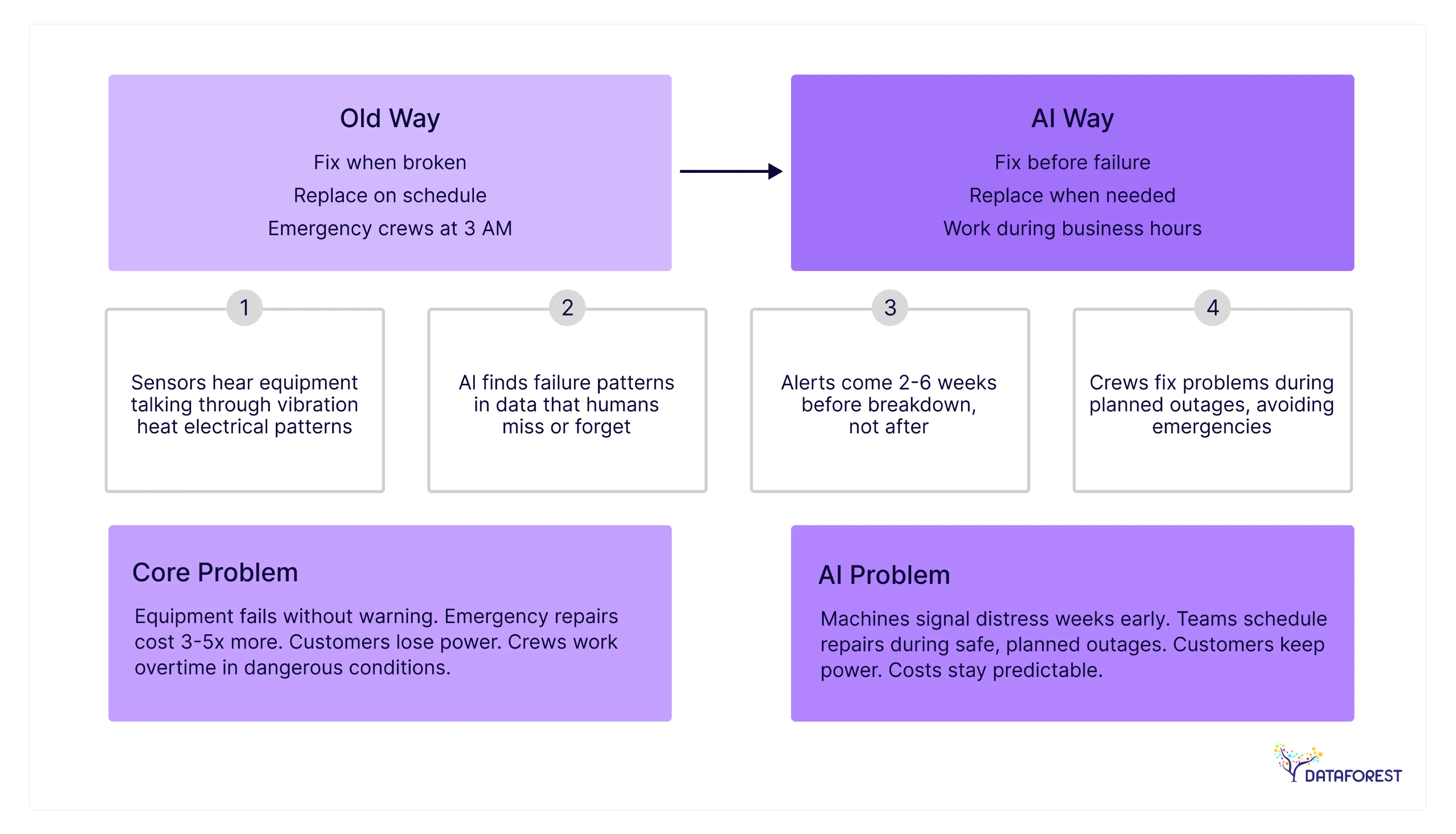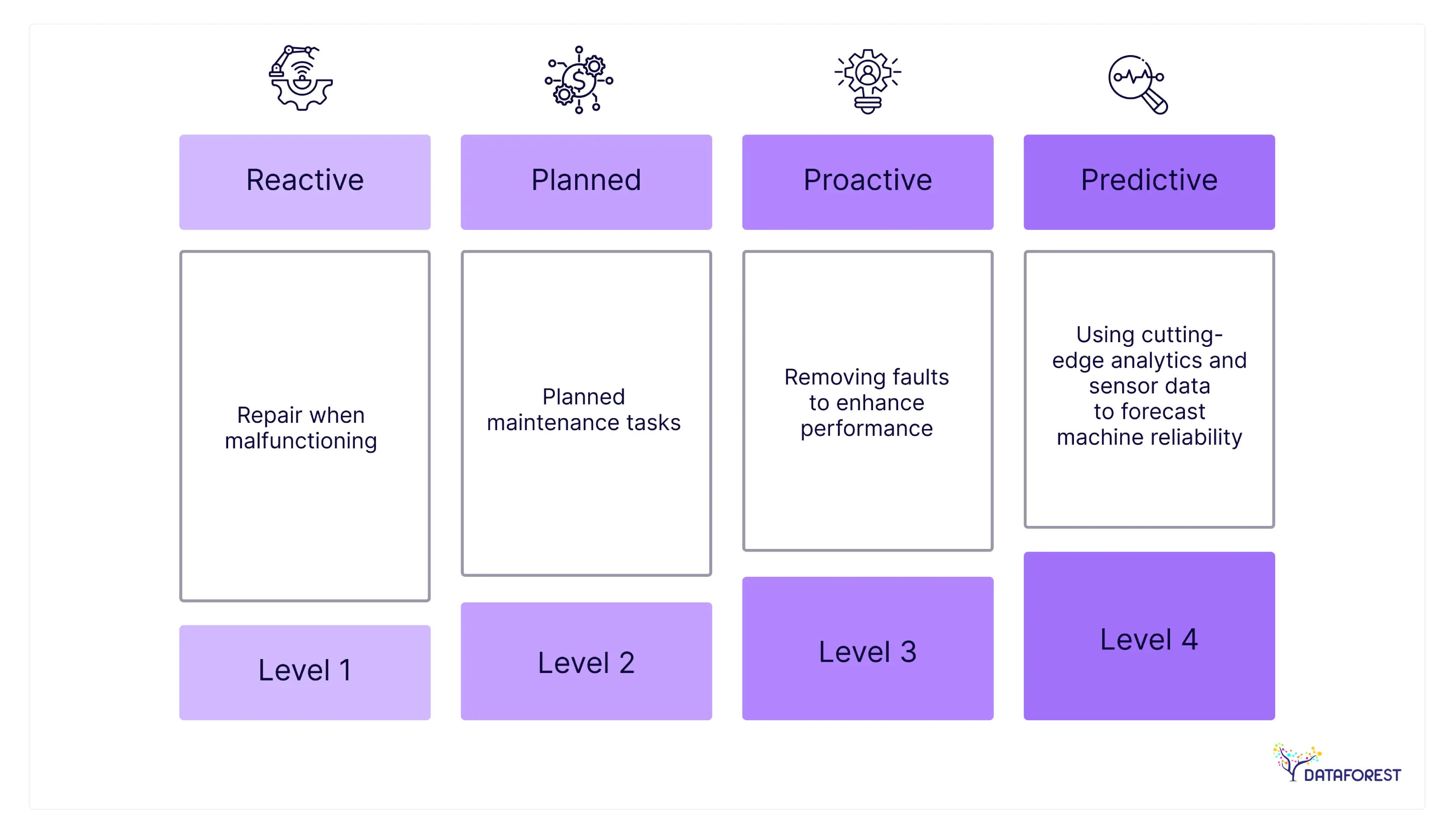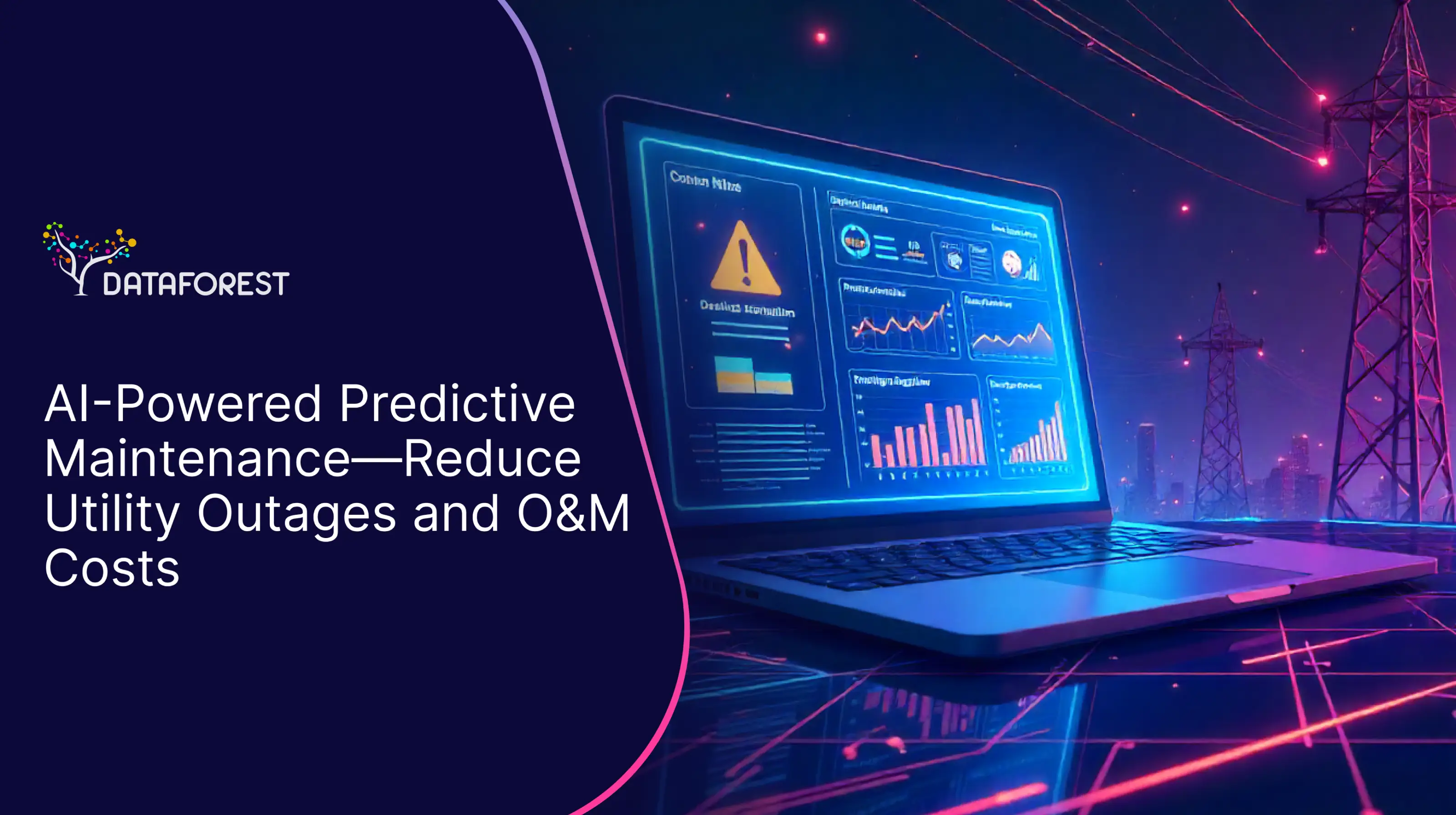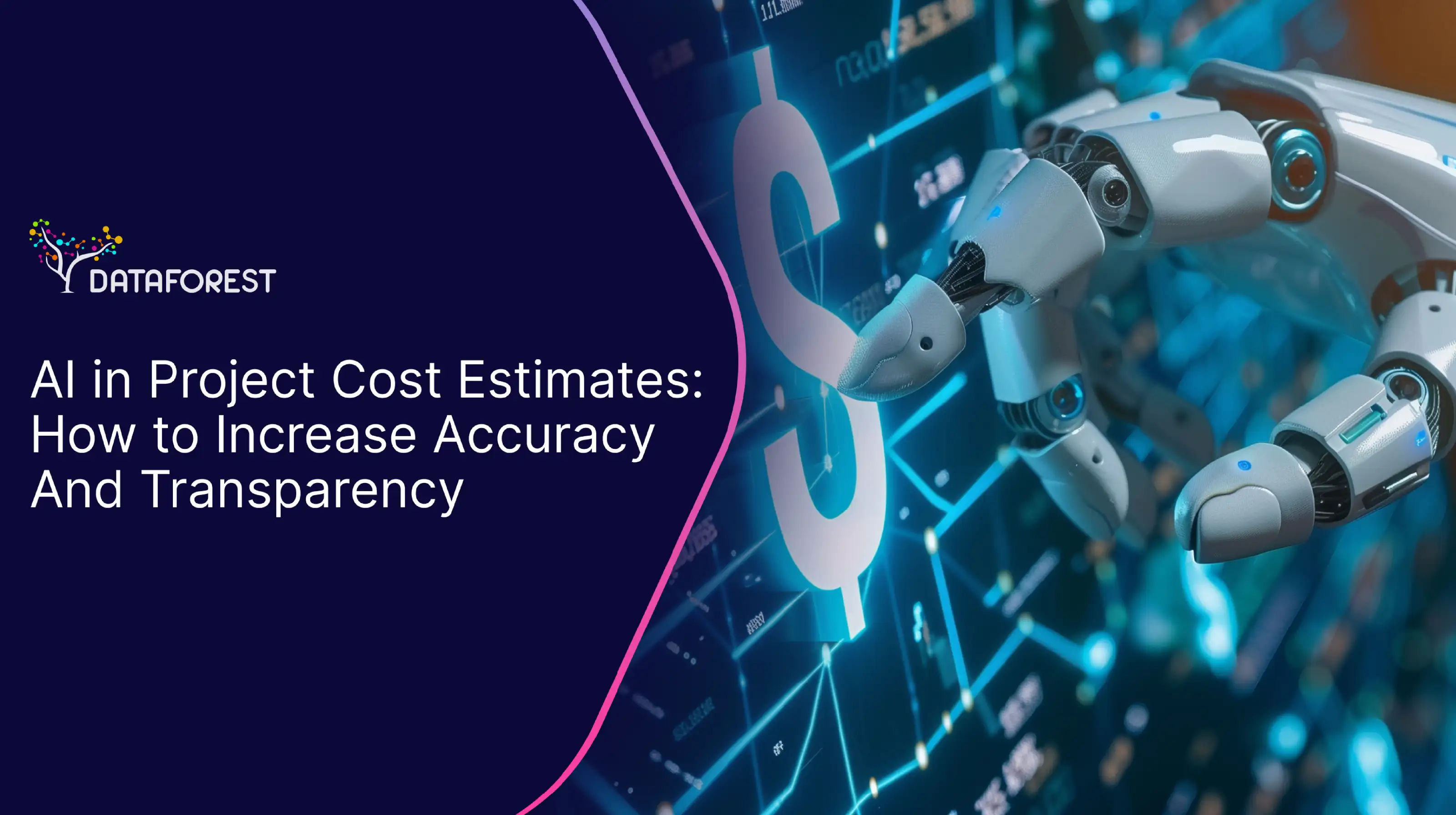A large utility deployed machine learning models to analyze vibration patterns from 500+ transformers, catching bearing failures 3-4 weeks before breakdown and reducing emergency repairs by 60%. The equipment failure prediction system cost $2M to implement but saved $8M annually by preventing outages that would have affected 50,000+ customers each. Book a call to stay ahead in technology with AI-powered predictive maintenance and unlock data-driven insights for energy distribution networks.

Why Are Utilities Still Fighting Yesterday's Maintenance Wars?
Power companies run on maintenance strategies from the 1970s. Equipment breaks, crews scramble, customers lose power. The costs pile up while reliability suffers, and operational efficiency declines.
Why Traditional Maintenance Falls Short
Utilities built their maintenance on two pillars: fix things when they break, or replace them on schedule. Reactive maintenance means waiting for failures, then dispatching emergency crews at 3 AM during storms. Preventive maintenance follows calendar dates, not actual equipment health. Both approaches waste money, ignore anomaly detection opportunities, and miss the real problems.
Equipment doesn't follow maintenance schedules. A transformer might run perfectly for 40 years, then fail the day after inspection. Meanwhile, another unit shows warning signs for months before anyone notices. The result: unnecessary work on healthy equipment while critical assets head toward failure.
Why Utilities Need Automated Monitoring Now
The electric grid carries more load every year. Solar panels, electric cars, and data centers create new stress patterns that manual monitoring can't track. Traditional crews can't scale to watch thousands of assets spread across hundreds of miles. The gap between what needs monitoring and what humans can monitor keeps growing.
Weather gets more extreme, regulations get stricter, and customers expect perfect reliability. Manual processes that worked when utilities served smaller loads now buckle under pressure. AI-powered predictive maintenance is about giving workers tools that match today's complexity—with cloud-based analytics and enterprise-level scalability for infrastructure resilience.
What Does AI Predictive Maintenance Deliver for Utilities?
Most promises about AI sound like fantasy. Here's what happens when utilities deploy AI-powered predictive maintenance solutions.
Fewer Surprise Failures
Equipment gives warning signs before it breaks. AI-powered predictive maintenance spots these patterns weeks ahead of failure. Emergency crews stop racing to fix transformers at midnight during storms. This doesn't prevent every outage. Weather still knocks down power lines. Human error still happens. But mechanical failures become scheduled events instead of surprises through better maintenance scheduling.
Lower Maintenance Bills
Crews stop changing parts that are still working correctly. Resources go toward equipment that needs attention. Labor costs drop when work happens during regular hours instead of overtime emergencies.
The savings take time to show up. Initial AI-powered predictive maintenance deployment costs money. Some utilities see payback in two years, others take five.
Equipment Lasts Longer
Machines running under optimal conditions don't wear out as fast. Minor problems get fixed before they damage expensive components. Asset replacement schedules stretch from 20 years to 25 or 30. This benefit compounds over decades. The transformer installed today might run until 2050 instead of 2040. That's real money saved on capital expenditure thanks to AI-powered predictive maintenance.
Better Regulatory Standing
Regulators demand fewer outages and faster response times. AI-powered predictive maintenance solutions help hit these targets. Compliance reports get easier when systems track everything automatically, and field service optimization improves reporting workflows. Penalties for poor performance can reach millions per incident. Prevention beats paying fines. Documentation becomes automatic instead of manual paperwork.
How Does AI Turn Equipment Data into Maintenance Decisions?
Utilities know their equipment will fail—they just don't know when. AI-powered predictive maintenance changes that by turning sensor noise into early warnings through anomaly detection.
Gathering Information That Matters
Sensors go on transformers, generators, and transmission lines. They measure vibration, temperature, oil quality, and electrical patterns. This data streams to central systems every few minutes or hours. The challenge is getting valuable data. Bad sensors create false alarms. Missing sensors leave blind spots. Integration means connecting decades-old equipment to modern networks. Most utilities start with their most critical assets. A substation that serves a hospital gets sensors first. Remote equipment might wait years. Budget and priority drive these choices.
Teaching Computers to Spot Trouble
Engineers feed historical failure data to machine learning models. The computer learns patterns between sensor readings and equipment breakdowns. Temperature spikes three weeks before transformer failure become predictable signatures. Model training takes months or years. Each piece of equipment behaves differently. A transformer from 1985 fails differently from one from 2010. Generic models don't work well.
The computer needs thousands of examples to get reliable. Utilities with decades of maintenance records tend to perform better. New installations start with educated guesses. Accuracy improves over time with AI-powered predictive maintenance.
Making Choices with Incomplete Information
Software flags equipment showing failure patterns. Maintenance teams get alerts with risk scores and recommended actions. Some repairs happen immediately. Others wait for scheduled outages.
- Not every alert means action.
- False positives waste money.
- Missed warnings cause outages.
- Teams learn to balance risk against resources.
- Experience teaches which alerts matter most.
Automation handles routine decisions. Replace this part—schedule that inspection. Humans handle complex trade-offs. Storm season changes priorities. Budget cuts delay repairs. AI-powered predictive maintenance supports both. Some repairs happen immediately, others wait for scheduled outages. Integration with legacy systems is essential to connect AI maintenance software with existing SCADA/ERP/CMMS workflows.
Are you interested in the update? Book a call!
What Matters When Deploying AI Predictive Maintenance?
Some utilities fail at implementation, not technology choice. Success depends on boring details like data quality and staff training.
Choosing Technology That Works
Vendors promise everything, but reality delivers less. Start by defining what failure modes matter most to your operation. Transformer bearing failures cost different money than generator vibration problems. Generic predictive maintenance solutions powered by AI handle neither well.
Evaluate vendors based on their failure data. Machine learning needs thousands of examples to work. Ask for proof they have data from equipment similar to yours. Same manufacturer, same vintage, same operating conditions. Without relevant training data, even brilliant algorithms produce garbage predictions.
Pilot programs reveal vendor competence fast. Deploy on 50-100 assets before committing millions. Watch false favorable rates during the first six months. Good vendors tune their models based on your feedback. Bad vendors blame your maintenance teams for not understanding the technology.
Budget for integration work that vendors underestimate. Connecting new sensors to old equipment takes longer than anyone expects. Plan for twice the quoted timeline and 50% more budget than the initial estimates.
Making Systems Talk to Each Other
Utilities run on software from the 1990s. AI vendors build for modern cloud environments. The gap between these worlds swallows budgets and timelines. Success requires connecting incompatible systems that were never designed to work together.
Start with data extraction before buying prediction software. Fix data problems first, add intelligence later with AI consulting for utilities. Can your current systems export maintenance records, failure histories, and operating parameters? If extracting clean data takes months, prediction algorithms won't help. Fix data problems first, add intelligence later with AI-powered predictive maintenance.
Legacy systems resist change. Plan for manual data entry during transition periods. Your maintenance teams will spend weeks copying information between old and new systems. Factor this labor cost into project budgets. Seamless integration exists mainly in vendor presentations.
- Test data flows end-to-end before going live.
- Sensors generate numbers.
- Software creates alerts.
- Work orders need updating in maintenance systems.
- People need training on new procedures.
Each connection point can fail. Build redundancy and manual backup processes.
API connections break frequently in industrial environments. Network outages, system upgrades, and configuration changes disrupt automated data flows. Maintenance teams need procedures for when technology stops working. Don't assume IT will fix everything quickly during outages—AI-powered predictive maintenance strategies should include fallback options.
Building for Long-Term Success
Utilities operate equipment for decades. AI vendors disappear within a few years. Choose AI-powered predictive maintenance solutions that survive vendor consolidation, acquisition, or bankruptcy. Proprietary systems become expensive problems when companies fail.
Sensor technology changes every few years: new wireless protocols, better battery life, and cheaper hardware. Plan replacement cycles for monitoring equipment. Budget 15-20% of initial sensor costs annually for upgrades and replacements.
Staff turnover kills institutional knowledge. Document everything about sensor locations, calibration procedures, and alert thresholds. When experienced technicians retire, their expertise vanishes. Written procedures and training materials preserve operational knowledge across personnel changes.
Start with a pilot project and expand gradually. Install sensors on critical equipment first. Learn what works in your environment through predictive analytics and real-time data monitoring. Train teams on manageable numbers of alerts. Scale up after proving value and building competence. Massive deployments usually fail because organizations cannot absorb change that fast—AI-powered predictive maintenance works best in phased rollouts.
Build internal expertise instead of depending on consultants. Hire people who understand both maintenance operations and data systems. External experts leave after projects end. Internal teams maintain systems for decades. Invest in training current staff to manage AI-powered predictive maintenance, remote diagnostics, and smart grid technology instead of outsourcing technical expertise.

Why Work with DATAFOREST for AI-Powered Predictive Maintenance Solutions?
Utility equipment fails, sometimes without warning. We help you see it coming earlier and act before it costs more.
Utility Experience That Holds Up in the Field
DATAFOREST has worked with utilities long enough to know their systems rarely match the diagrams:
- Real infrastructure is messy.
- Equipment ages unevenly.
- Sensors fail.
- Weather ruins plans.
That’s why our AI-powered predictive maintenance work starts with understanding the specific weak points in your network. We design AI models to flag risks you can act on before a breakdown shuts something down. It’s using the data you already have to minimize unexpected issues.
AI Models Built for Utility Complexity
Utility systems don’t follow neat rules. Old transformers share the grid with new ones. Demand spikes without warning. Data comes in from dozens of sources, not all of them reliable.
We build AI-powered predictive maintenance solutions to handle that chaos. They work with incomplete data, adapt as the system changes, and keep learning as more information comes in. The goal is simple: fewer emergencies, more planned fixes, and less wasted maintenance.
Gen AI in Maintenance: McKinsey's Take vs Reality
McKinsey writes, maintenance is getting more complex—machines now combine advanced software, sensors, and equipment from different eras, making upkeep harder. At the same time, veteran technicians are retiring, and new hires lack the data and digital skills needed for modern maintenance. Gen AI offers a straight answer: it accelerates data analysis, helps predict failures, automates routine tasks, and preserves essential maintenance knowledge within AI-powered predictive maintenance frameworks.
One oil & gas company now auto-generates failure modes and effects analyses (FMEAs), slashing downtime and freeing up personnel. Another manufacturer built a Gen-AI “copilot” to guide operators through troubleshooting, cutting unplanned downtime by up to 90%.
But Gen AI isn’t plug-and-play: it needs clear use cases, capable teams, upskilling, and change management to gain traction quickly. The critical question isn’t whether to start, but when—because with structure and focus, technology adoption in AI-powered predictive maintenance value can start appearing within weeks.
Please complete the form to implement AI-powered predictive maintenance solutions as part of your utility AI use cases strategy.
FAQ On AI-Powered Predictive Maintenance Solutions
How much can utilities typically save by implementing AI-driven predictive maintenance?
Emergency repairs cost 3-5 times more than planned work. Large utilities report $5-15M annual savings after full deployment of AI-powered predictive maintenance. Smaller operations might save $500K-2, but implementation costs eat into returns for the first 2-3 years.
What types of utility assets benefit most from predictive maintenance?
Transformers and generators show the best results. They fail predictably and cost millions to replace during emergencies. Transmission lines and distribution equipment provide mixed results because weather causes most failures, not mechanical wear—though AI-powered predictive maintenance can still improve monitoring.
How is AI different from traditional condition-based or scheduled maintenance?
Traditional maintenance follows human schedules or simple thresholds. AI-powered predictive maintenance spots patterns humans miss in thousands of data points. The difference matters most when equipment shows subtle warning signs weeks before obvious symptoms appear.
What kind of data is needed to train and run predictive maintenance models?
Models need years of sensor readings plus maintenance records for the same equipment types. Temperature, vibration, oil quality, and electrical signatures work best. Clean historical data about when things failed and why determines AI-powered predictive maintenance model accuracy more than algorithm choice.
How does predictive maintenance reduce unplanned outages and downtime?
Equipment gives warning signs before catastrophic failure. Teams get 2-6 weeks' advance notice to schedule repairs during planned outages. This prevents cascade failures where one broken transformer triggers broader grid problems affecting thousands of customers—AI-powered predictive maintenance makes this possible.
Can AI-based predictive maintenance be integrated with our existing SCADA/ERP/CMMS systems?
Integration works, but takes months longer than vendors estimate. Legacy systems resist modern data formats and real-time connections. Plan for manual data entry during transition periods and budget extra for custom programming work—this is a critical stage in successful AI-powered predictive maintenance adoption.








%20(1).webp)















